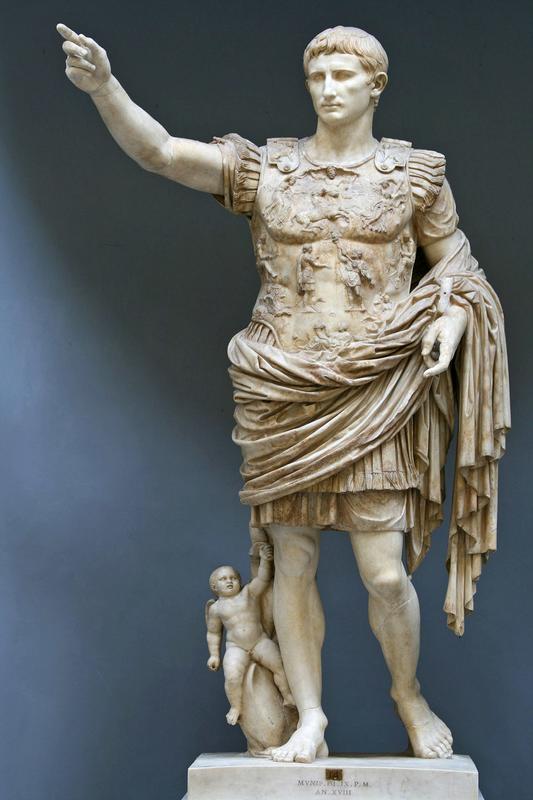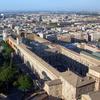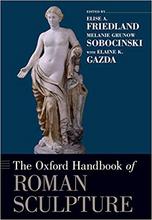More about Augustus from Prima Porta
- All
- Info
- Shop

Sr. Contributor
Augustus of Prima Porta is political propaganda at its finest.
Depicting Emperor Augustus, the first ruler of Imperial Rome, Augustus of Prima Porta is the Roman equivalent of a political campaign ad. The sculpture presents many of Augustus’ greatest feats and best attributes to an extreme that is almost cringeworthy.
The Augustus of Prima Porta displayed in the Braccio Nuovo of the Vatican Museums is a copy of a bronze statue built for a public square. The marble copy was made for the private viewing of Augustus’ wife, Livia, and was kept in her home in Prima Porta. When Augustus of Prima Porta was made, around 20 B.C.E, the emperor was in his forties or fifties, but the sculpture shows Livia’s man in his prime. It is an idealized portrait that gives Augustus beyond perfect muscles, a nice head of hair, and a jawline that could cut glass. His armoured breastplate, or cuirass, is unrealistically thin and tight. This highlights the emperor’s toned chest and makes Augustus look more like a shirtless model than a political leader.
Augustus of Prima Porta was created to be more than just something for the public to gawk at. The sculpture is also meant to commemorate Augustus’ successes, like the retrieval of the Roman standards from the Parthians. The standards were sculpted staffs that represented Roman political and national identity. The Parthians took the standards after defeating Rome in a battle that occurred before Augustus’ rule. Emperor Augustus’ success in returning the standards was a major accomplishment and became a political talking-point for the emperor. On Augustus of Prima Porta’s breastplate, there is a reproduction of the Parthians handing over the standards to the Romans. To make Augustus’ accomplishment seem even more amazing, the artist of Augustus of Prima Porta added Roman gods, goddesses, and personifications of the earth, the sun, the sky, and the moon to the breastplate. To the public, these artistic additions meant that Augustus was backed by the gods and worked for the good of the world.
The gods’ support of Augustus was not hard to believe because the emperor was apparently a direct descendant of Venus, the goddess of love. In Augustus of Prima Porta, Augustus tips his hat to his all-powerful ancestors with a sculpture of Cupid riding a dolphin as part of the portrait. Cupid is well known as the mischievous son of Venus, but the meaning of the dolphin is a bit harder to identify. Some scholars see the dolphin as a representation of the sea because that was Venus’ birthplace. However, to a follower of Augustus’ war pursuits, the dolphin would recall the emperor’s naval victory over Mark Antony and Cleopatra in 31 B.C.E. No matter how you interpret the animal, it symbolizes Augustus’ awesomeness.
Emperor Augustus might have been a hardcore narcissist, but he knew how to run a politcal movement. His ability to transform fine art into public propaganda was unprecedented in Rome. After Augustus’ rule, emperors adopted his use of art to influence the masses, but no artwork represents the strength of a Roman emperor better than Augustus of Prima Porta.
Sources
- Fischer, Julia. “Augustus of Primaporta.” Khan Academy. Accessed November 14, 2020. https://www.khanacademy.org/humanities/ap-art-history/ancient-mediterra… ient-rome/a/augustus-of-primaporta.
- Harris, Beth and Steven Zucker. Augustus of Primaporta. Smarthistory. Accessed November 14, 2020. Video, 06:22. https://youtu.be/0HhWj97jKSQ.
- Ingholt, Harald. “The Prima Porta Statue of Augustus.” Archaeology 22, no.3 (1969): 177-187. Accessed November 14, 2020. https://www.jstor.org/stable/41667995.
- Muller, Valentin. “The Date of the Augustus from Prima Porta.” The American Journal of Philology 62, no.4 (1941): 496-499. Accessed November, 14, 2020. https://www.jstor.org/stable/291617.
- Squire, Michael. “Embodies Ambiguities on the Prima Porta Augustus.” Art History 36, no.2 (2013): 242-279. doi:10.1111/1467-8365.12007.
Featured Content
Here is what Wikipedia says about Augustus of Prima Porta
The Augustus of Prima Porta (Italian: Augusto di Prima Porta) is a full-length portrait statue of Augustus, the first Roman emperor.
The statue was discovered on April 20, 1863, during archaeological excavations directed by Giuseppe Gagliardi at the Villa of Livia owned by Augustus's third and final wife, Livia Drusilla in Prima Porta. Livia had retired to the villa after Augustus's death in AD 14. Its discovery was first publicized by the German archaeologist Wilhelm Henzen the same year.
Crafted by skilled Greek sculptors, the marble statue is believed to be a copy of a lost original bronze piece displayed in Rome. It blends Greek and Roman elements to craft an idealized official image of Augustus, its execution showcasing his grasp of visual influence. While the head portrays a realistic youthful Augustus, the body diverges from reality; despite its clothed form, the body's stance reflects the heroic stance found in Greek statues. The detailed armor, depicting a Parthian returning standards to a Roman, symbolizes peace along the eastern frontier of the Roman Empire. The statue stands 2.08 metres (6 ft 10 in) tall and weighs 1,000 kilograms (2,200 lb).
The Augustus of Prima Porta is now displayed in the Braccio Nuovo (New Arm) of the Vatican Museums. Since its discovery, it has become the best known of Augustus's portraits and one of the most famous sculptures of the ancient world.
Check out the full Wikipedia article about Augustus of Prima Porta













